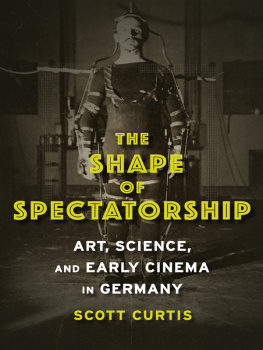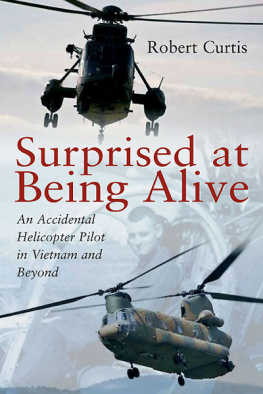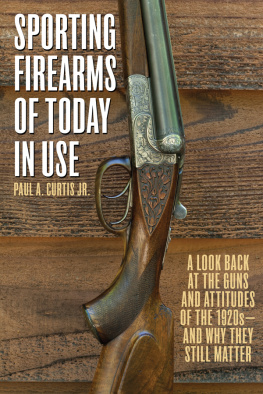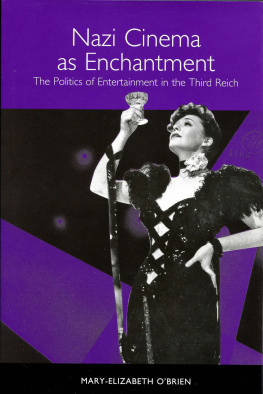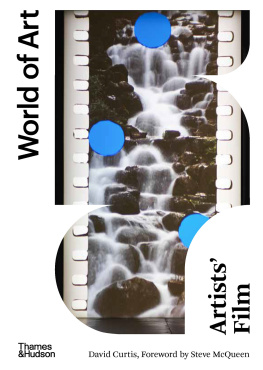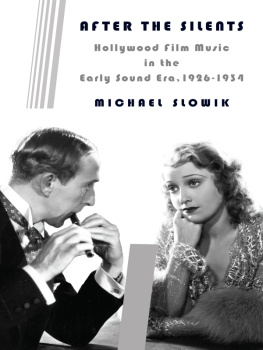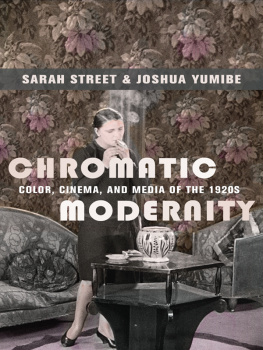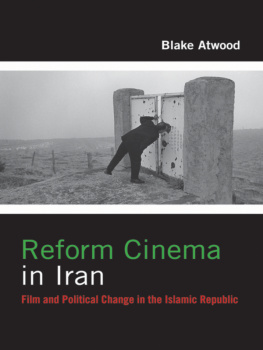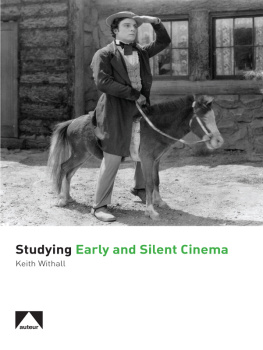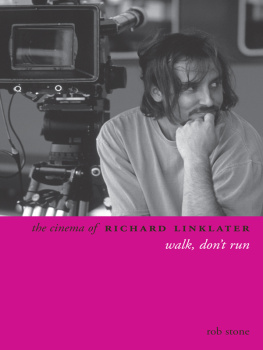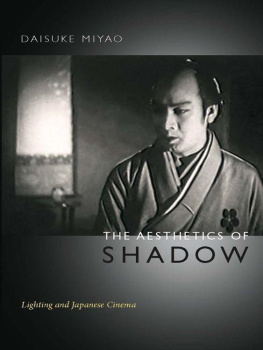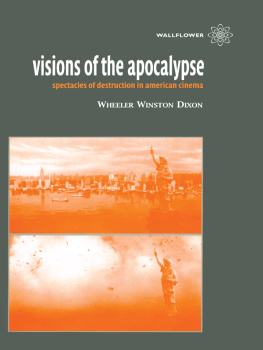THE SHAPE OF SPECTATORSHIP
FILM AND CULTURE
John Belton, Editor
FILM AND CULTURE
A series of Columbia University Press
Edited by John Belton
For the list of titles in this series, see .
THE
SHAPE
OF
SPECTATORSHIP
ART, SCIENCE, AND EARLY CINEMA IN GERMANY
SCOTT CURTIS
COLUMBIA UNIVERSITY PRESS
NEW YORK
Columbia University Press
Publishers Since 1893
New York Chichester, West Sussex
cup.columbia.edu
Copyright 2015 Columbia University Press
All rights reserved
E-ISBN 978-0-231-50863-6
Library of Congress Cataloging-in-Publication Data
Curtis, Scott.
The shape of spectatorship : art, science, and early cinema in Germany / Scott Curtis.
pages cm. (Film and culture)
Includes bibliographical references and index.
ISBN 978-0-231-13402-6 (cloth : alk. paper) ISBN 978-0-231-13403-3 (pbk. : alk. paper) ISBN 978-0-231-50863-6 (ebook)
1. Motion picturesGermanyHistory20th century. 2. Motion picture audiencesGermanyHistory20th century. 3. Motion picturesAesthetics. 4. Motion pictures in scienceGermany. 5. Documentary filmsGermanyHistory20th century. I. Title.
PN1993.5.G3C88 2015
791.430943dc23
2015010546
A Columbia University Press E-book.
CUP would be pleased to hear about your reading experience with this e-book at .
Cover Design: Jordan Wannemacher
Cover Image: From Wilhelm Braune and Otto Fischer, Versuche am unbelasteten und belasteten Menschen, Abhandlungen der Mathematisch-Physischen Klasse der Kniglich Schsischen Gesellschaft der Wissenschaften 21, no. 4 (1895): 151322
References to websites (URLs) were accurate at the time of writing. Neither the author nor Columbia University Press is responsible for URLs that may have expired or changed since the manuscript was prepared.
To my parents
CONTENTS
T his has been, to use an inappropriate medical metaphor, a long and difficult birth, but certainly not for lack of attendants or painkillers. After so many years of conceptions, reconceptions, and labor, however, it is hard to know who to thank or how far back to go, so I will simply begin to recite and offer my deepest apologies to anyone I inadvertently leave out. Various versions took shape in various locations, where I owe debts to the institutions and people who supported me and this project. The initial research was made possible by a stipend from the German Academic Exchange Service. Several people made my stay in Frankfurt more productive than it might have been. Heide Schlpmann, Helmut Diederichs, and Martin Loiperdinger offered good advice and kind, if somewhat bewildered encouragement as I struggled to define my topic. Diederichs also provided the rare image of Hermann Hfker for . Special thanks go to the late Eberhard Spiess for allowing me access to the periodicals and holdings of the Deutsches Institut fr Filmkunde, and to Brigitte Capitain for her patience as I took advantage of this generosity. In Iowa City, I appreciate the attention David Depew, Kathleen Farrell, and Hanno Hardt gave to the first version of this project, while John Durham Peters and Dudley Andrew deserve special thanks for their guidance through the years. In Los Angeles, I am grateful to Linda Mehr and the late Robert Cushman of the Academy of Motion Picture Arts and Sciences Margaret Herrick Library; I learned much from their example. Joe Adamson, Val Almendarez, Anne Coco, Steve Garland, Harry Garvin, Barbara Hall, Doug Johnson, Janet Lorenz, David Marsh, Howard Prouty, Lucia Schultz, Matt Severson, Warren Sherk, and all of my fellow librarians at the Herrick deserve thanks as well.
In Evanston, I owe thanks to the Department of Radio/Television/Filmespecially my colleagues Bill Bleich, Michelle Citron, Laura Kipnis, Chuck Kleinhans, Larry Lichty, Hamid Naficy, Eric Patrick, Jeff Sconce, Jacob Smith, Jacqueline Stewart, Deb Tolchinsky, and the rest of the facultyfor having faith in me. Chairs Annette Barbier, Mimi White, Lynn Spigel, and David Tolchinsky were steadfast in their support. I thank Lynn Spigel, especially, for all she has done on my behalf (as far back as Los Angeles) as a mentor, model, and friend. Deans David Zarefsky and Barbara OKeefe at the School of Communication offered resources in various forms, and I am grateful for their time, money, and patience. In Berlin, stays at the Max Planck Institute, thanks to Lorraine Daston, significantly sharpened my thinking about physics and observation, especially. In Weimar, Karl Sierek, Friedrich Balke, Daniel Eschktter, and the graduate students at Bauhaus-Universitt welcomed me and gave me space and time to work. In Innsbruck, Mario Klarer, Gudrun Grabher, Christian Quendler, Erwin Feyersinger, Robert Tinkler, Cornelia Klecker, Johannes Mahlknecht, Monika Datterl, and Maria Meth likewise gave time, space, and warm companionship freely, as well as trips to mountain cabins. In Doha, the entire staff and faculty of Northwestern University in Qatar made me feel welcome, especially program directors Mary Dedinsky and Sandra Richards, and colleagues Greg Bergida, David Carr, Susan Dun, Elizabeth Hoffman and Bob Vance, Joe Khalil, Muqeem Khan, John Laprise, Jocelyn Mitchell, Sue Pak, Christina Paschyn and Alex Demianczuk, Barry Sexton, Bianca Simon, Anne and Adam Sobel, Allwyn Tellis, Tim Wilkerson, and Ann Woodworth. Deans Jim Schwoch, Jeremy Cohen, and Everette Dennis displayed an inordinate amount of trust and confidence in my abilities; Dean Dennis, especially, offered whatever it tookand it took a lotto get it done, and I am deeply indebted to him.
Along the way, a number of people deserve commendation for having read or commented on various parts of this project in various forms. was lucky to have the scrutiny of Ben Singer, David Bordwell, David Levin, and Marc Silberman. For its current form, I must thank Robin Curtis, Gertrud Koch, Dan Morgan, Inga Pollmann, and especially Kaveh Askari and Tony Kaes for all of their insight and encouragement. There are still others who provided valuable assistance along the way, including research assistants David Gurney, Dan Bashara, and Rebecca Barthel. John Carnwath kindly and expertly corrected my translations, rescuing me from many infelicities. Stefanie Harris, Jrg Schweinitz, and various anonymous readers offered important insights that prompted revisions and changes in argument. For their stalwart professional support and friendship over the years, I must offer my heartfelt thanks to Richard Abel, Rick Altman, Matthew Bernstein, Jane Gaines, Dilip Gaonkar, the late Miriam Hansen, Tom Levin, Charlie Musser, Jan Olssen, Patrice Petro, Lauren Rabinovitz, Eric Rentschler, Mark Sandberg, Vivian Sobchack, and Virginia Wexman.
All of the people named so far I count as my friends, but some friends deserve special mention for their unselfish and nonjudgmental acceptance of me and my book. Tom Gunning has been a friend and mentor for a very long time; more than anyone, he has shaped the contours of this ongoing investigation, usually without even knowing it. Tony Kaes has been a loyal fan and inspiration since I was a student. Both Tony and Tom have offered insightful, transformative commentary on several versions. Oliver Gaycken, Vinzenz Hediger, and Kirsten Ostherr are my fellow travelers on this interdisciplinary journey; I dont often take a step without consulting them. Oliver read every word I have given him and always came back for more. Greg Waller and Brenda Weber have always offered valuable moral support and close friendship at just the right times. Ken Alder, Joe Carli, Lisa Cuklanz, Tracy Davis, Doug Johnson, Charlie Keil, and Will Schmenner have all been steady, life-long friends on whom I have leaned especially heavily at times. All the graduate students who have attended my seminars deserve note for their role in shaping my thinking over the years, but I thank especially Dan Bashara, Catherine Clepper, Beth Corzo-Duchardt, Alla Gadassik, Leslie Ann Lewis, Jason Roberts, Jocelyn Szczepaniak-Gillece, Kati Sweaney, and Meredith Ward. For their continuing friendship, I thank Richard Abel, Charles Acland and Haidee Wasson, Dana Benelli, Joanne Bernardi, Bill Bleich, Jeremy Cohen and Catherine Jordan, Kelley Conway and Matthew Sweet, Mark Garrett Cooper and Heidi Rae Cooley, Don Crafton and Susan Ohmer, Nick Davis, Leslie Midkiff DeBauche, Nico de Klerk, Carol Donelan and Shannon Spahr, Nataa uroviov, Dirk and Myrna Eitzen, Jen Fay, Andr Gaudreault, Philippe Gauthier, Frank Gray, Alison Griffiths and William Boddy, Barbara Hall and Val Almendarez, Sara Hall and Monty George, Stefanie Harris, Micaela Hester, Chris Horak, Laura Horak and Gunnar Iverson, Rembert Hueser, Jenn Horne and Jonathan Kahana, Christopher Hurless and Rachel Henriquez, Zara Kadkani and Axel Schmitt, Jim Lastra, Tom Levin, Melody Marcus, Caitlin McGrath, Christie Milliken, Priska Morrissey, Tania Munz, Bill Palik, Anna Parkinson, Jennifer Peterson, Sarah Projansky, Christian and Grace Quendler, Isabelle Raynauld, Mark Sandberg, Ben Singer, Blane Skowhede, Jake Smith and Freda Love Smith, Stefan Soldovieri, Matthew Solomon, Shelley Stamp, Bing Stickney, Claudia Swan, Steve Tremble, Alison Trope, Mark Williams and Mary Desjardins, Tami Williams, Michael and Julia Wilson, Pam Robertson Wojcik, Robb Wood and Hanaa Issa, Steve Wurtzler, Harvey Young, and Josh Yumibe.



